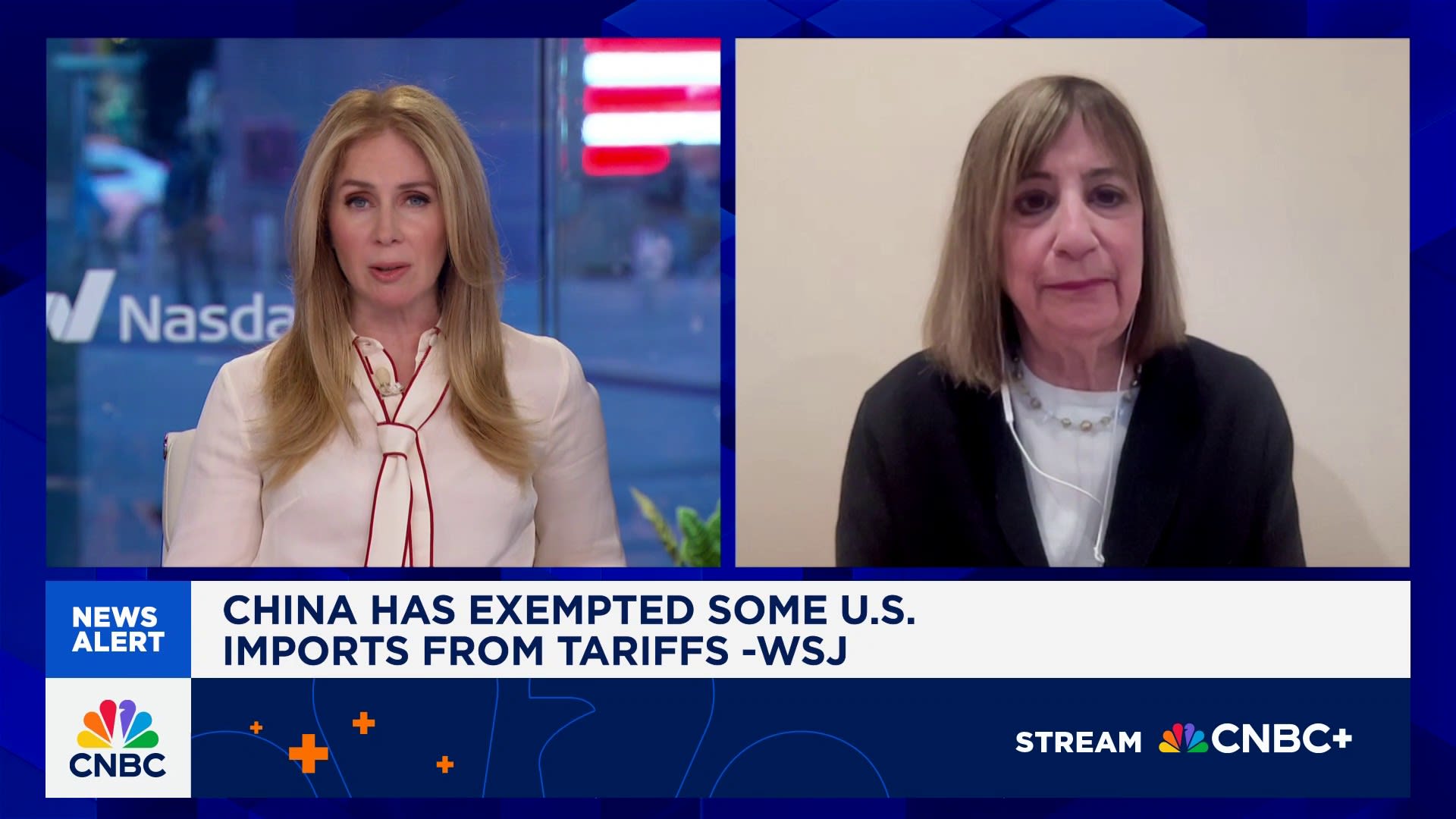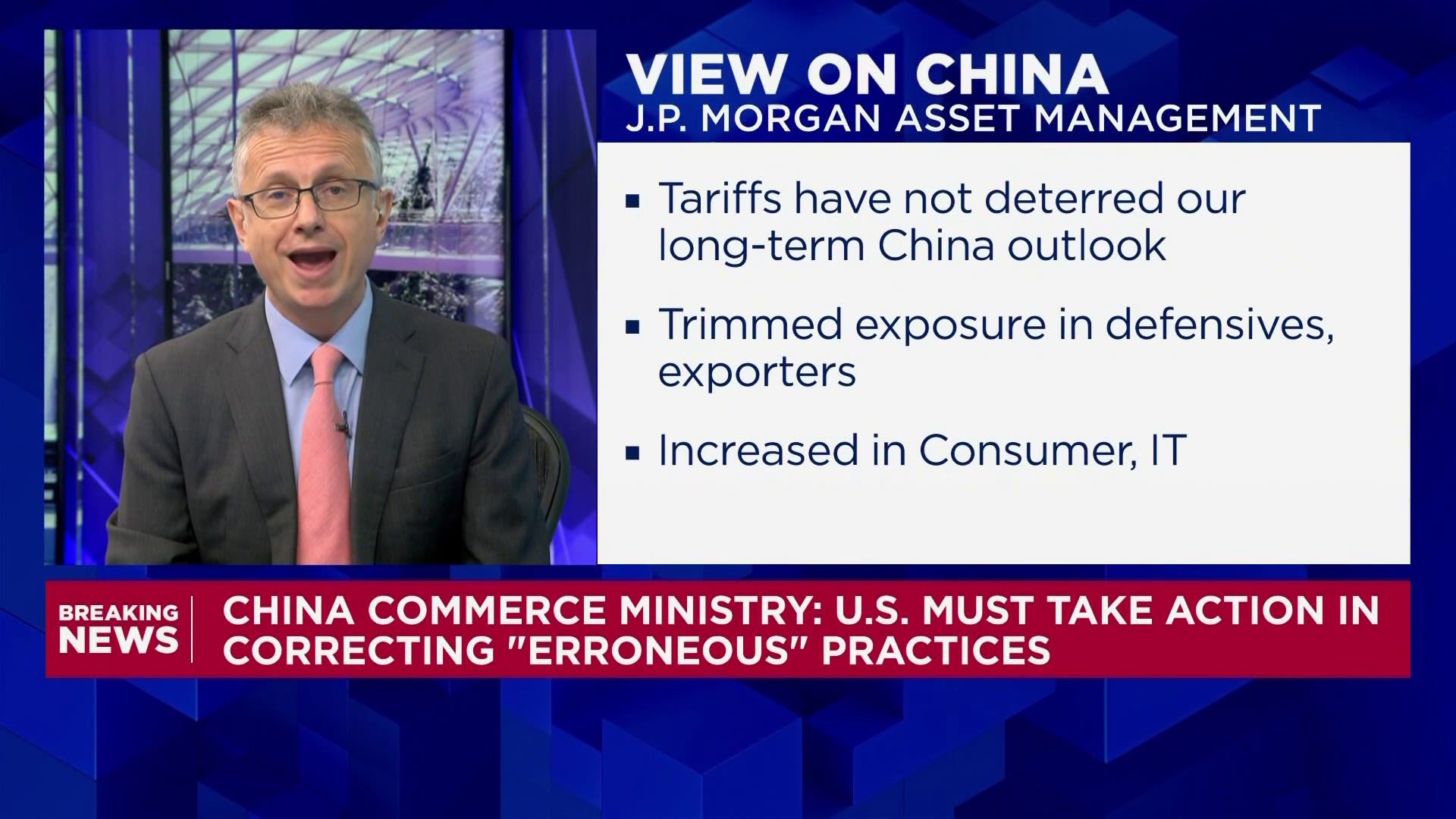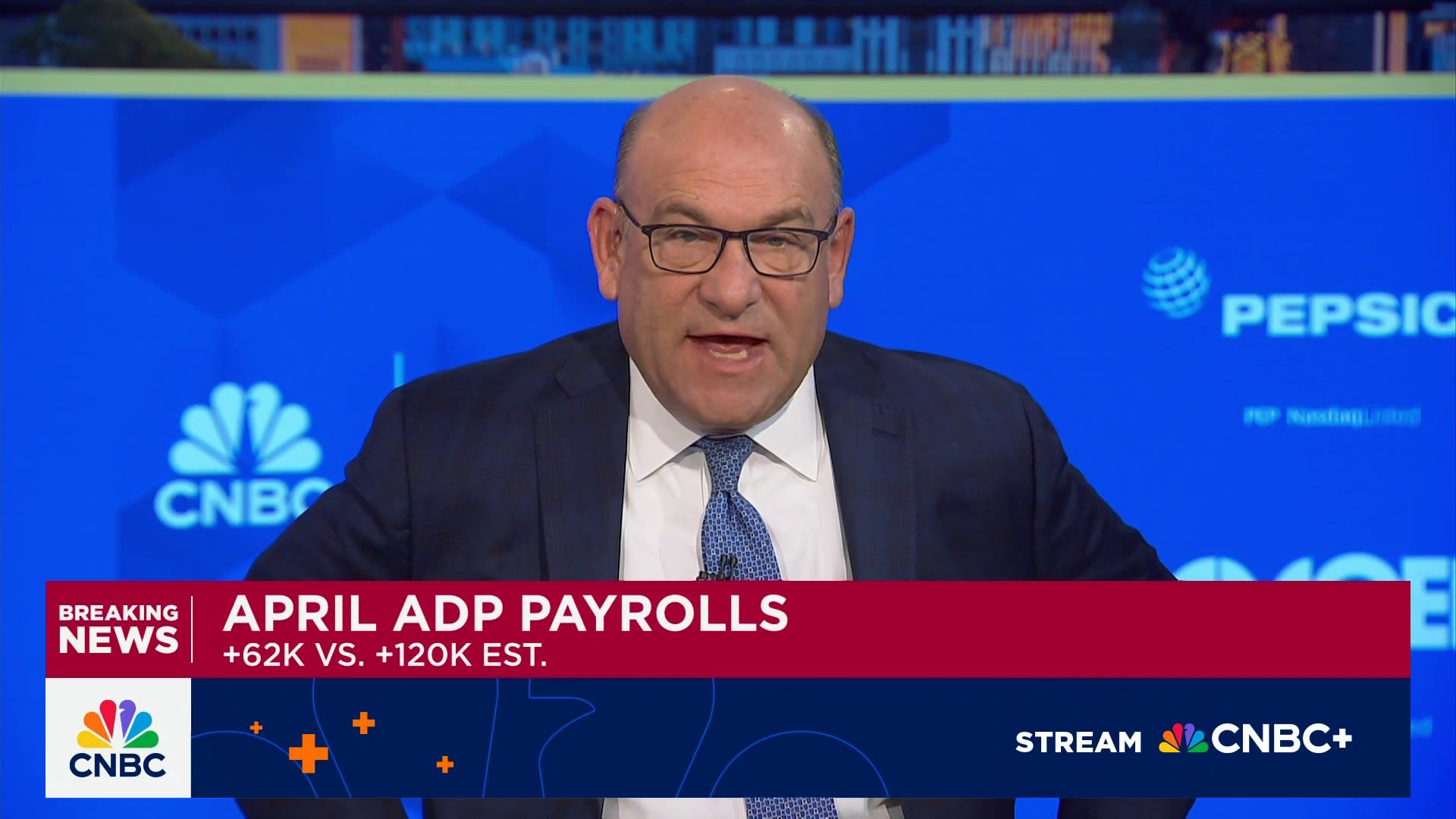SHENZHEN, CHINA – APRIL 12: A woman checks her smartphone while walking past a busy intersection in front of a Sam’s Club membership store and a McDonald’s restaurant on April 12, 2025 in Shenzhen, China.
Cheng Xin | Getty Images News
As sky-high tariffs kill U.S. orders for Chinese goods, the country has been striving to help exporters divert sales to the domestic market — a move that threatens to drive the world’s second-largest economy into deeper deflation.
Local Chinese governments and major businesses have voiced support to help tariff-hit exporters redirect their products to the domestic market for sale. JD.com, Tencent and Douyin, TikTok’s sister app in China, are among the e-commerce giants promoting sales of these goods to Chinese consumers.
Sheng Qiuping, vice commerce minister, in a statement last month described China’s vast domestic market as a crucial buffer for exporters in weathering external shocks, urging local authorities to coordinate efforts in stabilizing exports and boosting consumption.
“The side effect is a ferocious price war among Chinese firms,” said Yingke Zhou, senior China economist at Barclays Bank.
JD.com, for instance, has pledged 200 billion yuan ($28 billion) to help exporters and has set up a dedicated section on its platform for goods originally intended for U.S. buyers, with discounts of up to 55%.
An influx of discounted goods intended for the U.S. market would also erode companies’ profitability, which in turn would weigh on employment, Zhou said. Uncertain job prospects and worries over income stability have already been contributing to weak consumer demand.
After hovering just above zero in 2023 and 2024, the consumer price index slipped into negative territory, declining for two straight months in February and March. The producer price index fell for a 29th consecutive month in March, down 2.5% from a year earlier, to clock its steepest decline in four months.
As the trade war knocks down export orders, deflation in China’s wholesale prices will likely deepen to 2.8% in April, from 2.5% in March, according to a team of economists at Morgan Stanley. “We believe the tariff impact will be the most acute this quarter, as many exporters have halted their production and shipments to the U.S.”
For the full year, Shan Hui, chief China economist at Goldman Sachs, expects China’s CPI to fall to 0%, from a 0.2% year-on-year growth in 2024, and PPI to decline by 1.6% from a 2.2% drop last year.

“Prices will need to fall for domestic and other foreign buyers to help absorb the excess supply left behind by U.S. importers,” Shan said, adding that manufacturing capacity may not adjust quickly to “sudden tariff increases,” likely worsening the overcapacity issues in some industries.
Goldman projects China’s real gross domestic product to grow just 4.0% this year, even as Chinese authorities have set the growth target for 2025 at “around 5%.”
Survival game
U.S. President Donald Trump ratcheted up tariffs on imported Chinese goods to 145% this year, the highest level in a century, prompting Beijing to retaliate with additional levies of 125%. Tariffs at such prohibitive levels have severely hit trade between the two countries.
The concerted efforts from Beijing to help exporters offload goods impacted by U.S. tariffs may not be anything more than a stopgap measure, said Shen Meng, director at Beijing-based boutique investment bank Chanson & Co.
The loss of access to the U.S. market has deepened strains on Chinese exporters, piling onto weak domestic demand, intensifying price wars, razor-thin margins, payment delays and high return rates.
“For exporters that were able to charge higher prices from American consumers, selling in China’s domestic market is merely a way to clear unsold inventory and ease short-term cash-flow pressure,” Shen said: “There is little room for profits.”
The squeezed margins may force some exporting companies to close shop, while others might opt to operate at a loss, just to keep factories from sitting idle, Shen said.
As more firms shut down or scale back operations, the fallout will spill into the labor market. Goldman Sachs’ Shan estimates that 16 million jobs, over 2% of China’s labor force, are involved in the production of U.S.-bound goods.
The Trump administration last week ended the “de minimis” exemptions that had allowed Chinese e-commerce firms like Shein and Temu to ship low-value parcels into the U.S. without paying tariffs.
“The removal of the de minimis rule and declining cashflow are pushing many small and medium-sized enterprises toward insolvency,” said Wang Dan, China director at political risk consultancy firm Eurasia Group, warning that job losses are mounting in export-reliant regions.
She estimates the urban unemployment rate to reach an average 5.7% this year, above the official 5.5% target, Wang said.
Beijing holds stimulus firepower
Surging exports in the past few years have helped China offset the drag from a property slump that has hit investment and consumer spending, strained government finances and the banking sector.
The property-sector ills, coupled with the prohibitive U.S. tariffs, mean “the economy is set to face two major drags simultaneously,” Ting Lu, chief China economist at Nomura, said in a recent note, warning that the risk is a “worse-than-expected demand shock.”

Despite the mounting calls for more robust stimulus, many economists believe Beijing will likely wait to see concrete signs of economic deterioration before it exercises fiscal firepower.
“Authorities do not view deflation as a crisis, instead, [they are] framing low prices as a buffer to support household savings during a period of economic transition,” Eurasia Group’s Wang said.
When asked about the potential impact of increased competition within China’s market, Peking University professor Justin Yifu Lin said Beijing can use fiscal, monetary and other targeted policies to boost purchasing power.
“The challenge the U.S. faces is larger than China’s,” he told reporters on April 21 in Mandarin, translated by CNBC. Lin is dean of the Institute of New Structural Economics.
He expects the current tariff situation would be resolved soon, but did not share a specific timeframe. While China retains production capabilities, Lin said it would take at least a year or two for the U.S. to reshore manufacturing, meaning American consumers would be hit by higher prices in the interim.
— CNBC’s Evelyn Cheng contributed to this story.










